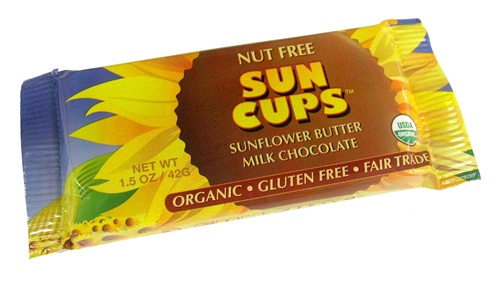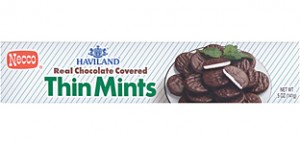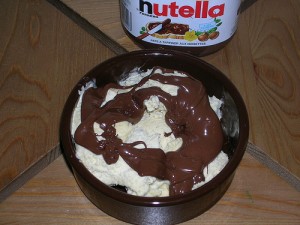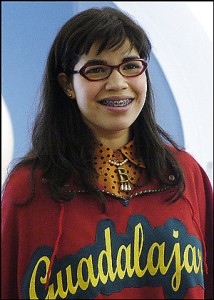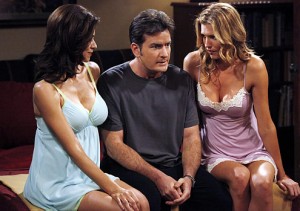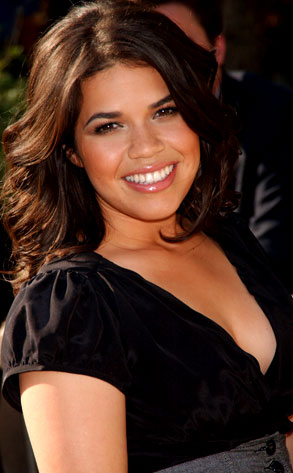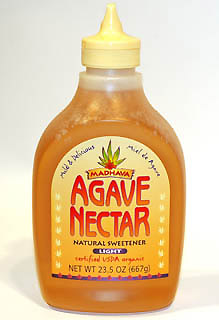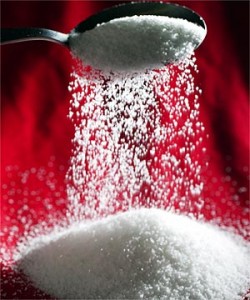Archive for April, 2010
-
Day 54: Happy Earth Day!
-
Day 54: Magical Thinking, the Donate Button and the Boston Red Sox
So yesterday I put a DONATE button on this blog. It’s a common widget on a lot of blogs. It basically says, hey nobody is paying me to write this content so can you give me something to offset my costs?
To someone who has been financially independent since the age of 21 and never relied on anyone for money, the DONATE button on blogs seemed pathetic and desperate. I mean, why write a blog if you have to beg for money?
Then yesterday, out of the blue, it seemed like a good idea. Am I desperate for money? No? But do I get paid for writing this blog? No.
I have Google AdSense ads on my blog to monetize it the way a lot of bloggers do. However, you need a TON of pageviews per day to make anything more than enough money to go to McDonald’s once a month.
So I put a DONATE button on the blog. Then it occurred to me: Who’s to say someone, a secret admirer of the blog, would make a huge donation. Hopefully anonymously. Just because he or she could. Just for the hell of it.
How fun would that be to get a big fat donation courtesy of PayPal?
See, that’s my magical thinking at work. People have mocked my magical thinking before -- most notably in 2004 when my hometown team, the Boston Red Sox, won the World Series for the first time in 86 years.
Curse of the Bambino? What curse? We were just pacing ourselves!
The American League Championship series that year was enough of a nail-biter. The Sox lost the first three games against the Yankees. At that specific point, it looked totally hopeless. The Bosox had choked again.
However, I had this strange feeling. It was so bad, the Sox losing the first three games of the ALCS, it looked as if they’d lose fast and limp away -- the World Series win yet again an impossible dream.
But because it was so hopeless, my instinct was this was the very thing the Sox needed: to be nailed to the wall with all odds against them. I don’t know about you but that’s the kind of stress and pressure I enjoy. It brings out the best in me. I think it’s an Irish quality -- and you know Boston is a Irish town.
So I told my friend Gale the Dodger fan in LA, “You know I think the Sox are going to win this and then they’re going to go on to the World Series and win that.”
Her scorn was palpable, even over the telephone.
“That’s your magical thinking again,” she said.
P.S. The Sox came from behind in the ninth inning of Game 4 of the playoffs and played an incredible 14 innings before winning the pennant and going to the World Series.
I could barely sleep at night it was so exciting. I even drafted all my California friends into being Red Sox fans -- at least in 2004.
P.P.S. Then the Red Sox won the World Series in four straight innings, knocking off the Cardinals in a 1-2-3-4 punch.
Gale called seconds after the Red Sox won the World Series for the first time in 1986. She called me “The Oracle” this time and said she was bowing down to the phone.
I believe in magical thinking.
I think someone will donate $100,000 to this blog. Why not? Life is a crazy adventure.
Never give up. Or so Winston Churchill told us.
Go Red Sox. I love you.
-
Day 53: My Most Embarrassing Sugar Addict Moment Involved Whipped Cream
No, stop, it’s not what you think – unfortunately. I haven’t had many embarrassing moments involving candy or desserts – maybe because I don’t hide my vice. I’ve always eaten candy right out in the open, no secret binging for me.
I do remember once when I was living in New York and someone noticed two empty boxes of Haviland thin chocolate peppermints sticking out of my trash. But that’s so boring it would get me kicked out of Overeaters Anonymous for even telling such a yawn story.
But one time qualifies as embarrassing:
One of my favorite cheap sugar fixes is whipped cream. The kind of plain whipped cream that comes in an aerosol can and you can buy in any supermarket in the U.S. or Europe. Normally I put some in a bowl. However, one time an entire can somehow migrated into my bed – when I was alone.
I apparently forgot about it until one day when a platonic male friend (could this get any more boring?) was at my place and decided to take a quick nap on my bed. What did he find? You guessed it – a can of whipped cream stuck down somewhere in the sheets. He only mocked me for about an hour or so and then forgot about it. Lucky for me he was also a bit of a sugar addict himself and couldn’t ridicule me too much.
I recovered this memory when reading an email from Meg Bozman, honorary U.S.-based correspondent for A Year Without Candy. Meg’s a member of the Wednesday night kick-sugar tele-coaching seminar led by Connie Bennett of SugarShock.com.
Most people might find eating plain whipped cream odd. Not sweetfreaks. Here’s Meg’s email to everyone in Connie’s group, reprinted with her permission, about her love for whipped cream, which morphs into her take on what it’s like to drastically reduce the amount of sugar she’s eating.
Meg’s rather cool goal is to be able to eat sweets just once or twice a month and she’s succeeding so far:
Hey everyone,
Whipped cream is another of my favs. Love love LOVE IT! Cool whip is good, but I prefer the redi-whip stuff – airy & fluffy & sweet. OK, sorry, I’ll refrain from further description.

We were in a rush Saturday to hit the road for our 3 hour trek to my Mother-in-Law’s place & stopped for a late lunch of fast food. Since we were rushing, I ran in to grab the food while my hubby got some gas. I got the drinks first & DH got a milkshake. They add HEAPS of whipped cream to the top & a cherry. He’s not that wild about maraschino cherries & often lets me have them along with several spoonfuls of the cream. There was a bunch actually sticking out from the top of the little domed plastic lid. I almost instinctually went to lick the protruding portion, but I stopped myself.
I stood there holding this drink, waiting for our chicken sandwiches & thinking how crazy it was for me to not have any. Uncharacteristic! This isn’t Meg!
But then I realized, resisting wasn’t that bad. It was just a brief, habitual urge to lick the whipped cream, but after resisting that urge, it just seemed like life… it was just the way it is to not have any. The same way I wouldn’t lick the whipped cream off the milkshake of the person standing next to me! The same way I don’t eat bacon (don’t like it) etc. I just don’t eat it.
I’m at 3 weeks as of tomorrow with no dessert. I think I’ll wait until the weekend, then have one sweet treat the 2nd weekend of every month. (Away from the office & the temptations of office candy & when I can go enjoy something with my family.)
I’m very interested to see how this evolves & if I’m able to ‘keep the lion controlled’ in this “once a month cage.” But I feel like I have to try it. I don’t want to say, “I’m never EVER having it again until the day I die.” Maybe I’ll find once every 3-4 months is better, I don’t know. But that’s my goal for now & I feel pretty good about it. I feel like I NEED to try it out.& certainly this weekend I will be watching myself like a science experiment to see how I feel after having something.
In other news, 3 weeks off desserts & I’ve nearly lost a dress size! I got my period yesterday & it actually took me by surprise – no moody PMS like last month! (Last month, I was so weepy & emotional, I hadn’t felt that way since I was a teenager!)
I also feel like I’m EVEN more aware of eating healthy than I was before. I miscalculated & we had to stop on our journey for snacks for my son (I continue to be astounded at how much he eats!) I had nuts in the car, but he didn’t want any, so I stopped & grabbed a yogurt & felt guilty feeding him the high-fructose-corn-syrup laden crap.
 (he isn’t wild about fresh fruit, unless pureed, so I didn’t even buy the melon slices or an apple.)
(he isn’t wild about fresh fruit, unless pureed, so I didn’t even buy the melon slices or an apple.)-Meg
-
Day 53: Selina Gave Up Candy For a Year at 16!
Budding journalist Selina MacLaren (today, left) was a 16-year-old student at West Valley Christian School near LA when she wrote about her Year Without Candy. Now she’s a 2o-year-old political economy and English major at UC Berkeley and reporter for the Daily Cal. See how she coped with her Year Without Candy. I think Selina is a great writer. She is considering journalism as a career, although it’s a tough profession to enter these days, with print media on its last legs. If anyone wants to hire Selina for a reporting job or writing project, you can email her at: smaclaren@dailycal.org.

Article reprinted from LA Youth, a newspaper “by and about teens.”
By Selina MacLaren
On New Year’s Eve 2004, I decided that I would make the ultimate resolution—no candy for one year. There is always candy in my house, and my mother, blessed with a good metabolism, considers candy an essential food group. I wanted to avoid this addiction, so I kissed good-bye to Reese’s Pieces, lollipops, Hershey’s Kisses and Jelly Bellies.
Giving up my indulgent habit was the price I decided to pay for the sake of a healthier lifestyle that could improve my mood (after the sugar withdrawal, you have more energy and fewer mood swings), running skills for cross country, self-discipline, and eventually, long-term health.
One of the most tempting experiences I had was immediately following New Year’s, when I was staying with relatives in Denmark. People in that country are notorious for having a sweet tooth, and it was an extreme test of my discipline to turn down the mounds of marzipan, chocolate and licorice candies offered each day.
Usually, the Danish cookies were enough to satisfy my cravings since I still allowed myself to have cookies, cake and ice cream. But sometimes candy was the only dessert offered, and I would sip my water and desperately try not to look.
Temptation was everywhere.
I struggled to stay up all night at sleepovers, surrounded by Reese’s wrappers and Red Vines, but forced to eat fruit, which definitely does not offer the sugar high that the candy gave my friends.
My family went to the Jelly Belly factory when the company had just created its new M&M-like candies, and the overwhelming scent of chocolate on the tour made it agonizing to refuse the free samples they handed out.
My family had to get used to the fact that chocolate wasn’t a present or souvenir for me, and in their flexible tolerance of my decision, they felt obligated to buy me unique presents. They usually decided upon tea, and consequently, fed my newly acquired tea addiction.
The strict and enduring resolution was the subject of many conversations among my friends. All summer, my friends debated whether chocolate-covered strawberries qualified as fruit or candy, only to draw more people into the debate and never reach a conclusion.
And for some reason, friends found it amusing to try to seduce me by annoyingly waving candy in front of my face, occasionally jabbing it between my tightly sealed lips.
At first, I had to fight the temptations by substituting candy with soda or ice cream. But after five months, I lost my cravings for candy and stopped viewing it as food at all. After eleven months, I forgot what certain candy, such as candy canes and white chocolate, tasted like.
Candy was inedible in my mind—artificially flavored, with unnatural textures and colors made in factories. Of course, much of the food we eat today is “factory-made” rather than nature’s true child, but candy even more so. After months of watching the bowl of sweets pass me by, those sweets became like plastic in my mind.
During Easter, my sister gladly took my candy, and I avoided trick-or-treating during Halloween. But as soon as I thought I had overcome my cravings, Christmas season came and candy was everywhere. When my school sold fudge in the cafeteria, I watched with adoring eyes as my friends licked the soft, sticky brown sweetness from their fingers.
Teachers handed out candy canes, and I would politely say no over and over until I was tired of the puzzled reactions and took the candy to give to a friend. The biggest obstacle was no longer my craving, but the pressure from other people and the constant explanations I had to give.
New Year’s came—success! Ten minutes after midnight, I held a green M&M in my hands and stared at it with anticipation. A crowd gathered around me, wanting to see my reaction to my first bite of candy in a year.
At first I wasn’t sure how to eat the M&M—was I supposed to chew it and get that chalky chocolate feeling between my teeth or suck it into disintegration?
The taste was familiar and brought back memories of the careless handfuls of M&Ms I used to eat. But not wanting to gorge right away, that M&M was the only candy I ate that night. Since then I’ve only eaten candy on Fridays (to make sure I don’t become addicted again).
I’m proud of my willpower.
Not eating candy didn’t make me a better runner, help me lose weight, or improve my mood like I had hoped it would, probably because I was still eating other sweets. However, I now have more confidence in my self-discipline and I know that I can fix my bad habits if I really dedicate myself. And apparently I’ve also affected others—two of my friends are trying the candy boycott this year.
Many people were amazed that I did it—or that I even wanted to try. Of the many motives I had, honestly the main reason was that I wanted a really tough resolution. I am a resolution addict.
Since my childhood, I’ve filled notebooks with lists of “Habits to Break” and “Habits to Make,” seeking eternal improvement. I believe that everyone has this drive within them—babies want to speak and walk, children grapple with reading and writing, adults rejoice over a raise at work or lost pounds—and we continuously want more of ourselves.
Resolutions teach people how to remember their goals, focus on them, and work toward them. Not only do they change your perspective and give you a sense of achievement, but they also teach you to forgive yourself for the goals you could not meet (example: the 15 times I’ve stopped biting my nails for a few weeks, only to resume during a stressful test).
New Year’s is by far my favorite holiday for all the obvious reasons—a time to start anew, appreciate the last year, leave behind regrets and, of course, the parties. But most of all, I am delighted that the entire Earth can join in the human desire to be better.
New Year’s is a time to forgive oneself, test oneself, and ultimately, experience eye-opening lessons. This year, I have a new challenge: I’ve given up chips and French fries. I don’t even have cravings for that salty crunch … yet.
-
Day 52: Should I Plan to Fall Off the Wagon?
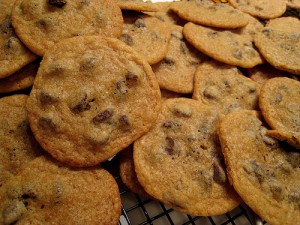 Some experts in the field of addiction don’t recommend quitting cold turkey, which is what I did when I gave up candy and desserts on Feb. 28, 2010. They recommend tapering off slowly instead.
Some experts in the field of addiction don’t recommend quitting cold turkey, which is what I did when I gave up candy and desserts on Feb. 28, 2010. They recommend tapering off slowly instead.Still others say it’s OK to relapse now and then – meaning don’t feel all is lost, you can start again.
I even know someone who calls relapsing “field research,” meaning you find out how bad you feel when you go back to your favorite substance – thereby ensuring theoretically that you go back on the wagon.
Since I am reporting about going off sweets, I began thinking today – what if I planned to fall off the wagon on a set date, at the exact halfway point of my Year Without Candy?
What if I ate some of my favorite treats on that day, which would be Saturday, Aug. 28, 2010. Then the next day I would go right back to my candy and dessert-free regime and write about how my mind and body felt after being filled up with sugar again.
There’s an upside and downside to this.
Upside: I can eat stuff I love for one day! Legally, without lying on this blog. And of course, all in the name of research.
Downside: It won’t truly be A Year Without Candy. It’ll be a Year Minus a Day Without Candy. Plus the way I work is often all or nothing, black and white. I often get momentum and motivation from extreme situations. Also, what if I couldn’t get back on the wagon?
Mitigating factor: Who the hell cares? Most of us will be dead within 50 or 60 years. Could all our little goals, plans, petty complaints, laughable aspirations, earnest analysis, faithful blogging – be any more inconsequential? I think not.
I have a few months to consider whether to deliberately fall off the wagon – and what candies and desserts I will eat that day. I am not a binger – and sweets get sweet fast – so I must be judicious in my planning.
The Relapse Menu so far:
Breakfast: One or two freshly-baked Nestle’s Toll House cookies. NO NUTS! Why do people wreck the purity of this perfect food with walnuts and their ilk?
Lunch: Two fudge selections – to be mailed to me in time for Aug. 28 from Swiss Maid Fudge in Wisconsin. I hereby choose the peanut butter and chocolate fudge and the creme de menthe and chocolate fudge (also known as Irish fudge.)
High tea: Half the quantity of a box of Haviland thin chocolate peppermints from Rite-Aid in New York City. Cost of the box? $.99. Will also need to have them shipped to me if I am not in New York.
Dinner: A bowl of Haagen Dazs vanilla ice cream with a dollop of Nutella (there’s even a page for this killer combo on Facebook!)
Midnight snack: Gail’s buttered popcorn with embedded chocolate and butterscotch chips. (Photo currently unavailable.)
There you have it. I feel plumper and sated already.
Ready for a sugar-crash nap – if I could only see the shore.
Ta,
-
Day 50: He Tells You How to Quit Sugar!

London’s Independent has this article about how to quit sugar inspired by the work of addiction expert Patrick Holford.Reprinted from the Sunday Independent
Get rid of that sweet tooth: How to quit sugar
By Sophie Morris
So much for Mary Poppins. All those spoonfuls of sugar are not only making us fat, they’re contributing to arguably the biggest health threats facing humanity: diabetes, caused by soaring levels of obesity. Eating too much sugar can also make us tired, irritable, anxious, spotty and aggressive, and lead to insomnia.Why do we eat so much sugar?
You shouldn’t feel guilty about enjoying sugary foods. Human beings are designed to like sweet things – a clever physiological trick to save us from the poisonous plants and berries, which usually have a bitter taste.
Before the agricultural revolution, however, the only sugar we could get in our diet occurred naturally. Starchy foods such as rice, wheat, corn and potatoes – and then bread, noodles and pasta – soon became our principal source of energy. In itself, this didn’t cause too many problems, until someone hit on the idea of processing raw sugar into the refined white stuff you find in most kitchen cupboards – and adding liberal helpings of it to almost every packaged and processed food on our supermarket shelves.
Most people’s sugar hits start right at the beginning of the day with a bowl of breakfast cereal, laden with delicious, sweet additives. Even if you think you’re being clever and eating porridge mixed with dried fruits such as raisins, you are still ingesting a fair whack of sugar. In fact, the sugar in raisins raises your blood sugar in the same way as white refined sugar. Apples and pears contain fructose, which raise your blood sugar about 50 per cent slower than grapes; berries, plums and cherries contain xylose, which releases blood sugar 50 per cent slower again.
Other culprits, aside from the obvious sugary drinks, are processed sauces and soups, which have often been sweetened.
Why is sugar so dangerous?
The UK is rushing headlong into a diabetes crisis fuelled by increasing obesity. Both conditions are linked to the intake of too much sugar and refined carbohydrates. When you pump your body full of sweet things, blood-sugar levels rocket and the body releases insulin in order to remove this excess of sugar from the bloodstream. Where does it put this extracted sugar? On your hips, tummy and bum, in the shape of fat.
Patrick Holford is the author of a new book called How to Quit without feeling S**t which treats the issue of sugar addiction as seriously as heroin, alcohol and nicotine. “The root of most of today’s killer diseases is actually blood sugar problems,” he says. “So the goal becomes, how do you keep your blood sugar even?”
Sugar cravings
Keeping one’s blood sugar even is a bit of a vicious circle. We need to feed our bodies to stave off energy slumps, but doing that with hits of sugar will not help in the long term. Have you ever experienced that mid-afternoon slump after a carb-heavy lunch? No doubt you think it means you need more energy to get through the afternoon, and will fend off the fatigue with a biscuit or, if you’re the healthy sort, apples or a banana.
The reason you slumped in the first place is because you ate too many carbohydrates for lunch, instead of a balanced meal with plenty of protein. Plugging that gap later on with yet more sugar will make you feel worse, and most likely less able to concentrate. Studies even show that plenty of non-obese people have developed insulin resistance, no doubt because their bodies have become accustomed to being fed sugar with such regularity, and have stopped bothering to break it down.
There are also strong correlations between the level of sugar in your blood and your mood. When people have low blood sugar they start feeling tired and perhaps depressed. They might become irritable, anxious, aggressive and find it difficult to concentrate. As a result, sweet foods are craved in order to bring that blood sugar back up as quickly as possible. “People who feel blue and then eat something sweet find it makes them feel better,” says Holford. “They are probably low in serotonin and they’ve learned that sugar makes them feel better.”
Regulating sugar intake
There are two main ways to balance blood sugar. The first is to avoid carbohydrates and follow a regime similar to the Atkins Diet, eating a high-protein diet. This method works for lots of people, who use Atkins as a loose blueprint for their approach to eating, rather than as a strict diet. The point is that carbohydrate, not fat, is the enemy. The demonisation of fat within the health and diet industry has led to even more sugars being added to apparently healthy, low-fat foods, in order to make them palatable.
The second way is to eat a diet that has a low “glycaemic load” (GL). The “glycaemic index” tells us how quickly the sugar from certain foods is released into the blood stream. What it doesn’t tell you is how much of that food is sugar. Holford says that it is better to control the amount of sugar we eat. “Atkins limited the amount of carbs, but didn’t pay so much attention to the GI,” says Holford. “The GI diet limits the fast-releasing GI sugars but doesn’t pay enough attention to the quantity eaten.”
For example: any food with a GI food of more than 70 is considered bad. Watermelon scores 72, but in a 120g slice there are only six grams of sugar. The sugar is released very quickly into the blood stream but there is not much of it.
Oat-based cereals are better than rice- or corn-based cereals. Beans, lentils and pulses are high in carbohydrate but low-GL; brown rice and wholewheat pasta are better than white, but quinoa is much better than any of these.
The good carb/bad carb debate seems to be ongoing, and no wonder: who wants to give up that bowl of pasta? The obvious solution if you really want to pull your body back from the brink of sugar dependency would be to limit foods that are high in sugar aggressively.
How to quit
The tricky bit. The act of coming off sugar has been likened to going cold turkey on a heroin habit. This seems fairly extreme, but, as we have seen, even those of you who don’t add three spoonfuls of sugar to your tea every morning are probably overloading on sugar with cereals and fruits.
“Depending on someone’s sugar addiction,” says Holford, “it takes between two and five days to come out of withdrawal from sugar. We’ve done work in schools where children are sugar-addicted. They feel flat and rough and lacking in energy for a couple of days after removing sugar. But within a week most people begin to experience more energy and more mental clarity.”
Beat the sweets: Tips for quitting
1. Make a low-sugar meal plan. Swap breakfast cereal for oats and try adding low-GL cherries or berries as a sweetener.
2. Eat little and often. This means three meals and two snacks, so have something on hand mid-morning – a handful of almonds should do the trick.
3. Up your intake of Vitamin C. One study showed that a very high intake of Vitamin C reduces blood sugar levels and lowers the damaging effects of sugar.
4. Use sugar replacements. Work out the times of day you eat something sweet and replace it with something less sugary. For example: a punnet of strawberries has the same effect on your blood-sugar levels as 10 raisins, or one date. Xylose, the sugar in berries, is available in supermarkets as xylitol. You can add this to hot drinks or porridge and bake with it. Manuka honey is a great replacement for refined sugars.
5. Stay off the caffeine. Sorry: you might have decided coffee was to be your crutch while you kicked sweets, but caffeine also disrupts blood-sugar balance. Antioxidants in green tea will help repair any damage done by yo-yoing blood sugar levels.
6. Get some help. Once you’ve balanced your blood sugar, you need to make sure insulin is working as it should. Cinnamon supplements will help with this. Tryptophan can help reduce sugar cravings (take 200mg a day) and tyrosine will help you deal with the low moods and flatness in the initial stages (take 500mg twice a day, but none too late in the day to avoid disrupting sleep).
-
Day 50: “How to Quit Without Feeling S**T”
The guy in the below video is Patrick Holford, who wrote a book called How to Quit Without Feeling S**T. (His stars, not mine.)
He calls his books “the fast, highly effective way to end addiction to caffeine, sugar, cigarettes, alcohol, illicit or prescription drugs.” He says your body betrays you when you start to give up an addictive substance – and he tells you how to fix your body with vitamins and nutrients so the withdrawals aren’t so bad.
Check out the video and will also be posting a Holford-inspired article about how to quit sugar later today.
-
Day 49: Why “Ugly Betty” Was So Beautiful
Regrets? I have at least one. My life will always be somewhat wanting because I was not a cast member of “Ugly Betty,” which ended its 4-year run last week. Not only did it look like the most fun job on the planet, the actors were some of the best on TV and the writing was unparalleled.
You can have “The Wire.” I’ll take Suarez & Co. – the show smart enough to make the sidekick the star.
True, they hardly ever showed a snippet of a sex scene between Betty and some of her improbably hot boyfriends – and it was a little difficult to imagine nerdy Betty, awkward, cheery, mouth full of braces, in bed.
But she must have been good, right? I mean, Betty’s suitors just got better every season.
Never judge a book by its cover, a point brought home by TMZ.com’s resident blond surfer boy, Max Hodges, yesterday on TMZ’s live stream. Hodges, the Jeff Spicoli of TMZ, was talking about Sandra Bullock. He said what everyone secretly thinks about “America’s Sweetheart,” who willingly spent five years sleeping with a tattooed, philandering, neo-Nazi pit bull aficionado, but nobody dares say.
“She’s gotta be a superfreak,” said Hodges. “I’ve known a lot of straight girls like that. You can’t believe what they’re really like when you get them home.”
But Betty was no Bullock. Yes she came from Queens, her father was an illegal alien and she showed up for work at Mode magazine on her first day with bangs, beetle brows and a red Guadalajara poncho. Yes, the whole Vogue-like staff mocked her mercilessly – but it never really got to her.
Unlike Bullock, Betty had bulletproof self-esteem. She never hid anything. When she was hurt or humiliated, she felt it and showed it. Then picked herself up and focused her attention back on the prize. She didn’t have any game going to hide her shame so lucky her, she got past it. No need for a Jesse James to take on her dark side for her. She worked it out herself.
So the four-year “Poncho to Honcho” storyline (for you non-Betty fans, she went from Mode Magazine underling to London editor by the last episode) never seemed far-fetched. I’ve known some Bettys. Dolly Parton is one. They don’t let anything get in their way – without being evil and while being true to themselves.
I think I saw every episode of “Ugly Betty” but the scene that stood out was this season when Betty’s teenage nephew, Justin, who wasn’t even out yet to himself, never mind his family, suddenly kissed a boy.
When I watched the scene I thought of two gay male friends of mine in their 50s, both of whom told me how they felt suicidal at times during their adolescence and what a difference it must be to be a gay teenager now and see a scene like that.
Betty, and the fantastic actress who played her, America Ferrera, are at least 20 pounds heavier than most female leads on TV. Weight was never an issue for Betty. The only character with a food problem was skinny Amanda and her “stress-eating.”
As a result, watching “Ugly Betty” felt nourishing. I noticed the contrast when, a few months ago, I inexplicably started watching the seven-year-old TV series, “Two and a Half Men” for the first time.
Of course it’s a totally different show aimed at a different audience. But I was struck by how by how flat, brittle and hollow the actresses come off on the show – especially Jennifer Taylor, who plays Charlie Sheen’s girlfriend Chelsea. She’s pictured below in a scene with Sheen and another, similar actress.
Taylor and Marian Hinkle, below, who plays Jon Cryer’s ex-wife on the show, are the kind of women you only see in Southern California – and especially on a certain kind of TV show or movie.
I live in France where the women are slim, but it looks natural. If you live in Europe and return to LA after a long time away, as I did last fall, it’s a shock to see these hard, tranny-like looking women with their Botoxed faces and fat-free bodies.
The contrast between their thin, muscled arms and big tits is so weird and amazing. Nobody looks like this in France. Taylor and Hinkle radiate coldness when you watch them. Their bodies are perfect – or considered perfect in Hollywood, I guess – but it seems as if the strain of making them that way has starved them of all warmth and humor. It’s hard to imagine them having fun. No nourishment here.
In contrast, during the final episode of “Ugly Betty” last week, there was a scene in which Betty was wearing a sleeveless dress. Her upper arm was fleshy without much definition.
Somehow, it looked good!
Bye Betty, good luck America!
-
Day 48: Just Say NO to Agave!
THIS SWEETENER IS FAR WORSE THAN HIGH FRUCTOSE CORN SYRUP!
By Dr. Joseph Mercola
Reprinted from the Huffington Post
Many people interested in staying healthy have switched to agave as a safer “natural” sweetener. They want to avoid well documented dangerous sweeteners like HFCS (high fructose corn syrup) but are unaware that most agave is actually WORSE than HFCS.
This expose will offend many hard core natural health advocates because they have been convinced of the agave hype by companies that are promoting it.
Some have even criticized me for having “ulterior” motives. But nothing could be further from the truth. Although I do offer natural health products for sale on this site, I sell no competing products to agave.
Rather, I recommend other options such as stevia products. You can also use xylitol in small amounts or glucose which is sold as dextrose and can easily be purchased on Amazon for $1 per pound. I do not sell any of these products.
My only purpose for sharing this information is to help people understand the truth about health. In case you haven’t noticed, we have an epidemic of obesity in the US and it wasn’t until recently that my eyes opened up to the primary cause – - fructose.
Keep reading the article here at the Huffington Post.
-
Day 48: Break Free of Sugar in 6 Weeks!
Want to get off candy and sweets like me but don’t have the motivation to start?
Connie Bennett, author of Sugar Shock and the Oprah of the quit-sugar world, is offering a new six-week teleseminar/webinar called “Break Free of Your Sugar Addiction in Six Weeks.” Click here for all the details. The course begins April 20.
Spring-clean your body and start fresh for summer 2010!
Connie knows what she’s talking about. She celebrated 12 years off sugar yesterday.
Below is from Connie’s description of the course:
- Are you fed up with feeling imprisoned by your out-of-control habit of eating candies, cookies, crackers and other quickie carbs?
- Do you feel discouraged, overwhelmed and frustrated because — no matter how many different diets or programs you’ve tried — you still haven’t overcome your sugar addiction and you keep packing on pounds instead of peel them off?
- And are you scared that bad health — such as type 2 diabetes, cancer, heart disease or Alzheimer’s Disease are out to get you and send you to your grave early because you eat so poorly?
- Are you agonized and at wit’s end because every single time you commit to quitting your sugar and carb habit — always with the best of intentions — you inevitably fail and end up packing away piles of potato chips, pasta and pretty desserts?
- Do you behave like this other sad, tragic, tormented person when you’re “high” on sugar or thinking of getting your next sugar “fix”?
- And does being trapped in a sugar habit hold you back from living your best life?
If you answer yes to any of the above questions, I can help you break free of your sugar addiction in a life-changing, 6-week teleseminar/webinar series that you’ll easily access by phone or the Internet.
If you’re frustrated, fed up and impatient with your sugar addiction and are ready now to lose weight, get more energy, be happier and feel free, then let me help you as I celebrate 12 years sugar-free this month.
About
Recent Posts
- Day 365: Tell the Women of Congo You Love Them!
- Day 364: What If the World Did End in 2012?
- Day 363: Twilight of the Dictators, Twilight of No Candy
- Day 353: Howl of a Candy Addict
- Day 351: Self-Deprivation Sucks
Archives
- February 2011 (8)
- January 2011 (5)
- December 2010 (2)
- November 2010 (3)
- October 2010 (14)
- September 2010 (4)
- August 2010 (7)
- July 2010 (10)
- June 2010 (11)
- May 2010 (16)
- April 2010 (35)
- March 2010 (40)
- February 2010 (4)
Sugar Free Days
Blogroll
- A Life Less Sweet
- BodySoul Adventures
- Candy Addict
- Crazy Sexy Life
- Feel Good on Purpose
- Food Politics
- Madame Lamb
- My Years Without Sugar
- Paris Breakfasts
- Stop Being Sweet
- Sugar Shock
- Sugar Stacks
- The Dip
- Vinecdote
- Women for Women International
